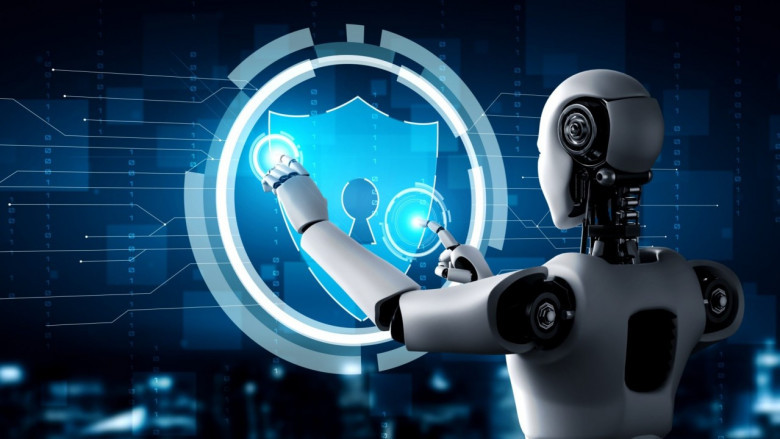views
Introduction
In an age where cyber threats are becoming increasingly sophisticated and persistent, traditional cybersecurity measures often struggle to keep up. This is where Artificial Intelligence (AI) comes in, offering advanced solutions that not only bolster security but also shape the future of cybersecurity itself. As organizations face a growing number of cyberattacks, AI is proving to be a game-changer in how we defend against these threats. This article explores how AI is transforming cybersecurity, highlighting its impact on threat detection, response automation, and the overall security landscape.
The Evolving Threat Landscape
Cybersecurity threats have evolved significantly over the years. From simple malware to highly complex ransomware attacks, cybercriminals are becoming more innovative in exploiting vulnerabilities. As businesses adopt more connected technologies and digital platforms, the attack surface grows, providing hackers with more entry points to exploit.
Traditional cybersecurity tools, while effective to an extent, often fall short when confronted with the speed, scale, and complexity of modern threats. In this context, AI technologies offer solutions that are smarter, faster, and more efficient in identifying and mitigating risks before they escalate.
AI-Powered Threat Detection
One of the most significant ways AI is transforming cybersecurity is through enhanced threat detection. Machine learning algorithms can analyze vast amounts of data in real time, identifying patterns and anomalies that may indicate a potential threat. This approach allows AI systems to recognize emerging threats based on previously unseen data, something traditional systems struggle with.
For example, AI can detect unusual network traffic patterns, sudden spikes in login attempts, or abnormal file changes that could indicate a cyberattack. By using AI, security teams can receive early warnings, significantly reducing the time between detection and response.
AI-driven systems also excel at detecting zero-day vulnerabilities—flaws in software that have not yet been discovered or patched by the vendor. AI can recognize the behavior of a zero-day exploit before it is cataloged by conventional cybersecurity tools, helping organizations mitigate risks faster.

Automating Incident Response
In the battle against cybercrime, time is of the essence. The quicker an organization can identify and contain a threat, the less damage it will incur. This is where AI-driven automation becomes invaluable. With the ability to analyze data, identify threats, and trigger responses autonomously, AI can significantly reduce the time needed to respond to incidents.
For example, if AI detects a malicious activity, it can automatically isolate affected systems, block suspicious IP addresses, or terminate harmful processes. These actions can take place in real time without requiring human intervention, drastically reducing response times and minimizing the impact of an attack. This automation also frees up security teams to focus on more complex tasks, improving overall efficiency.
Predicting and Preventing Attacks
AI’s role in cybersecurity extends beyond detection and response; it also has the potential to predict and prevent future attacks. By analyzing historical data and learning from previous incidents, AI can identify trends and predict potential vulnerabilities that cybercriminals may exploit. This predictive capability enables organizations to proactively strengthen their defenses before a breach occurs.
Moreover, AI systems can continuously learn from new data, allowing them to evolve with emerging threats. This adaptability makes AI a powerful tool in the fight against cybercrime, as it can stay one step ahead of attackers.
The Future of AI in Cybersecurity
As AI continues to develop, its role in cybersecurity will only expand. We can expect more sophisticated AI systems that combine machine learning, natural language processing, and other advanced technologies to tackle a wider range of cyber threats. These systems will not only be more effective at detecting and preventing attacks but also be able to adapt to the increasingly complex and dynamic cyber threat landscape.
Furthermore, the integration of AI with other emerging technologies like blockchain, Internet of Things (IoT), and cloud computing will create a more robust and secure digital ecosystem. Organizations that embrace AI-powered cybersecurity tools will be better equipped to protect their data, systems, and customers from the growing threat of cyberattacks.
Conclusion
Artificial Intelligence is undoubtedly transforming the cybersecurity industry, providing organizations with innovative solutions to combat the evolving landscape of cyber threats. From advanced threat detection to automated responses and predictive capabilities, AI is enhancing the ability to protect sensitive data and maintain operational integrity. As the digital world continues to grow, AI will remain at the forefront of cybersecurity, offering a future where businesses can stay one step ahead of cybercriminals.
At Roll Consults, we recognize the immense value of AI in cybersecurity. As experts in AI-driven security solutions, we are committed to helping organizations leverage the power of AI to secure their digital environments and stay protected against emerging threats.
For more information,
Visit at: https://rollconsults.com/the-role-of-ai-in-cyber-security-architecture/






















Comments
0 comment